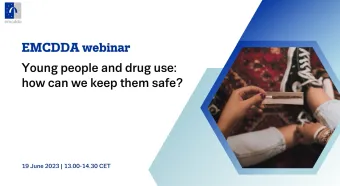Infographic: Examples of strategies to prevent the diversion of opioid substitution treatment medication
Description
Although the diversion of opioid substitution treatment (OST) medications has been described as a growing problem in recent years, there has been little systematic monitoring or data on the extent and nature of the problem. There is therefore a lack of empirical data to inform regulatory decisions and to develop prevention and risk management plans. Nevertheless, a number of interventions have been developed and are currently used in Europe to minimise the diversion of OST medications.
These include:
- the use of misuse-deterrent formulations, for example, suboxone or the dilution of methadone to discourage injection;
- the development of clinical prescribing guidelines on the supervision of doses for people who are not stable in treatment;
- educating physicians on safe opioid prescribing, including comprehensive initial assessment and regular monitoring of patients, and providing information to patients on safe use, including appropriate storage and disposal;
- electronic medicine dispensers to promote safe opioid prescribing and reduce medical errors;
- control measures such as patient toxicology tests, pill counts and unannounced monitoring;
- regulation at a system level via registers of pharmacy transactions with disciplinary measures to address inappropriate prescribing














